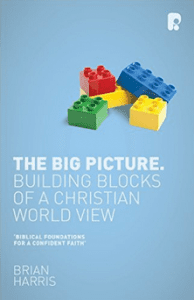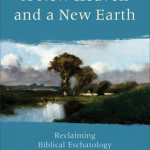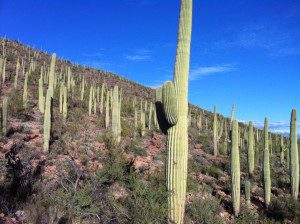 In the final chapter of his book The Liberating Image: The Imago Dei in Genesis 1 J. Richard Middleton suggests a new interpretive framework for Genesis 1. This is not new as in totally innovative, or dismissing tradition altogether, but it is new in focus. Middleton made the case that God is portrayed as both artisan and ruler. He brought “into being a wisely crafted world through the exercise of royal power.” The world he created is not characterized by the imposition of a transcendent will or by a cosmic battle. It is also important to realize that the world was not created solely to serve mankind. He concludes that a responsible reading of Genesis 1 does not justify violence toward creation or toward other humans. Rather, Genesis 1 serves as a prologue that describes God’s good plan for his creation. The argument is fleshed out roughly as follows.
In the final chapter of his book The Liberating Image: The Imago Dei in Genesis 1 J. Richard Middleton suggests a new interpretive framework for Genesis 1. This is not new as in totally innovative, or dismissing tradition altogether, but it is new in focus. Middleton made the case that God is portrayed as both artisan and ruler. He brought “into being a wisely crafted world through the exercise of royal power.” The world he created is not characterized by the imposition of a transcendent will or by a cosmic battle. It is also important to realize that the world was not created solely to serve mankind. He concludes that a responsible reading of Genesis 1 does not justify violence toward creation or toward other humans. Rather, Genesis 1 serves as a prologue that describes God’s good plan for his creation. The argument is fleshed out roughly as follows.
The Rhetorical Structure of Genesis 1. Although there are patterns in the creation story, these patterns are not rigid rhetorical (mathematical) structures from which we can draw deep truths concerning the nature of God’s rule and thus human rule as the imago Dei. This is a literary work with a degree of looseness and creativity. After a bit of a wander through chaos, fractals, and strange attractors, Middleton suggests that Genesis 1 does not depict a creator like a Newtonian lawgiver, but a creator who defines a structure and allows for freedom. Some of this seems to me, as a scientist, as though concepts are appropriated and stretched to make a point. Ultimately however (fractals and strange attractors aside) I find his conclusions insightful. Genesis 1 depicts a creation where God intentionally shares power with his creation. The greater and lesser lights are not divine beings, but they are charged to rule the day and the night. The earth and the waters bring forth life.
On days 3, 5, and 6 (in 1:11-12, 20, 24), God invites the earth (twice) and the waters (once) to participate in creation by bringing forth living creatures. Whereas the earth is invited to produce first vegetation (1:11) and later land animals (1:24), the waters are invited to teem with water creatures (1:20). They are invited, in other words, to exercise their God-given fertility and thus to imitate God’s own creative actions in filling the world with living things. (p. 288)
Plants and animals are blessed with fertility to reproduce and fill the earth. And Middleton concludes:
While these dimensions of the Genesis 1 creation story are not often noticed, attention to these rhetorical features points us to a God who does no hoard divine creative power, with some desperate need for control, but rather to a God who is generous with power, sharing it with creatures, that they might make their own contribution to the harmony and beauty of the world. (p. 289)
Beyond this humans are created in the image and likeness of God. They are commissioned to be fruitful and multiply, to fill the earth and subdue it, to rule over the creatures of the sea, sky, and land. Middleton points out, however, that humans do nothing in Genesis 1 except receive a blessing and commission. For the rest of the story we turn to Genesis 2-3.
The Seventh Day. Middleton does not see Genesis 2 as an alternative creation story – one that contradicts or balances Genesis 1. Nor does he see Genesis 2 as an elaboration of Day 6. Rather he sees it, much like John Walton, as a continuation of the story. Genesis 1 is “a prelude to the rest of the Genesis narrative setting up the normative conditions for what follows.” (p. 291) There are two literary clues that point to this structure.
First, on the seventh day, following six days of creating, God rests. But in the structure of the narrative the seventh day has no end – the events of Genesis 2-3, and the rest of Genesis, and the Bible take place on the seventh day. God remains involved in his creation, and in relationship with his creatures, but God “rests” in 2:2 and continues to rest because the post creation rule has been delegated to the creation, and especially to humans.
Second, There is a tôlĕdôt structure outlining the generations in Genesis beginning with 2:4 “These are the generations of the heavens and the earth when they were created” (RSV, KJV, ESV …). This formula is found throughout Genesis dividing the book into 11 sections. In Genesis 2:4a the formula introduces the generations that follow from creation: human history beginning with Adam. But Genesis 1-2:3 precedes this tôlĕdôt structure. Middleton suggests that this means that Genesis 1 is a prologue to what follows.
The Trouble Begins. And in what follows the trouble begins … well not until Genesis 3. In Genesis 2 the man names the animals, is given a companion, marriage is instituted as a bond between a man and a woman, and the couple is placed in the sacred space of the Garden. The relationship between the man and the woman is not hierarchical but complementary. But it is downhill from there.
In Genesis 3, the primeval human pair rebel against God, and then the man begins to rule the woman (a rule that is not reciprocated) and names here Eve (thus treating her as he did the animals). In Genesis 4, Cain impulsively murders his brother Abel out of resentment, while he-man Lamech boasts to his two wives (the first reference to polygamy in the Bible) that he has in vengeance killed a youth for daring to injure him. And this violent propensity spirals out of control until in Genesis 6 humans fill the earth with their violence or bloodshed (hāmās), and the earth, which God created good, becomes corrupt and God is “grieved” (ˁāş ab) that he ever raised such an ungrateful brood of children (6:5-6). (p. 295-296)
The Liberating Image. The significance of Middleton’s view of Genesis 1 is that it separates human violence and domination from the nature of creation itself. When humans, created in the image and likeness of God, are told to rule over creation it isn’t a rule of power and domination but a rule characterized by creative love. Genesis 1:26-28 was a revolutionary text in the ancient Near East, democratizing the image of God from a singular king to all of human kind. Genesis 1 as a whole was also revolutionary because it shatters expectations of power, domination and conquest and instead “depicts God as a generous creator, sharing power with a variety of creatures (especially humanity) inviting them (and trusting them – at some risk) to participate in the creative (and historical) process.” (p. 296-297) God is a God of Love, for God is Love.
In the end, the liberating character of the imago Dei is grounded in the nature of God, who calls the world into being as an act of generosity. This means that we cannot artificially separate our vision of God’s redemptive love from an understanding of God’s creative power. In both creation and redemption, “God so loved the world that he gave …” (p. 297)
And Concluding Comments. There is much in Middleton’s book that lends insight to understanding of the imago Dei. The similarity and contrast with the ancient Near Eastern context lends a great deal of insight. The imago Dei is not a collection of special features of humanity – but a democratized commission. The absence of primordial violence in Genesis 1 is also significant. Middleton’s view of what this means for the nature of God and thus the commission of humans as the image of God is thought-provoking
 Middleton doesn’t address the presence of the snake or serpent in the garden however. Some have suggested that this is a chaos creature, perhaps even a remnant of a cosmic conflict in creation … a sentiment that does find traction in our churches with the serpent personified as Satan. (The Cerastes gasperetti or horned viper, image from wikispecies, native to Iraq and the Middle East looks the part.)
Middleton doesn’t address the presence of the snake or serpent in the garden however. Some have suggested that this is a chaos creature, perhaps even a remnant of a cosmic conflict in creation … a sentiment that does find traction in our churches with the serpent personified as Satan. (The Cerastes gasperetti or horned viper, image from wikispecies, native to Iraq and the Middle East looks the part.)
When I look at scripture (in translation, with no knowledge of Hebrew) the answer to the question is conflicted: Is the serpent “more crafty than any of the wild animals the Lord God had made” as the NIV translates it, or is the serpent “the most cunning of all the wild animals that the Lord God had made” (HCSB) or “more crafty than any other beast of the field that the Lord God had made” (ESV)? The difference between the NIV and the other two translations is quite significant. The NIV translation suggests that the serpent is not one of the wild animals (Satan, chaos creature – a remnant of conflict?) while the other two suggest that it is one of God’s animals.
The view of the serpent and the interchange between the woman and the serpent in the garden may impact our understanding of creation, and thus of the imago Dei. I tend to think that the snake is a snake, a part of the creation of the animals in Genesis 1-2. It isn’t intended to portray the presence of a chaos creature or Satan. If so, this may serve to support Middleton’s view that the freedom of creation entailed a risk, and a fall. The freedom and fall was more than just human. Regardless, the role of the serpent is worth some discussion.
All in all a very interesting and thought provoking book.
What is our purpose and mission as the image of God in the world?
What attitudes toward both nature and people emerge from this purpose and mission?
If you wish to contact me directly you may do so at rjs4mail [at] att.net.
If interested you can subscribe to a full text feed of my posts at Musings on Science and Theology.










